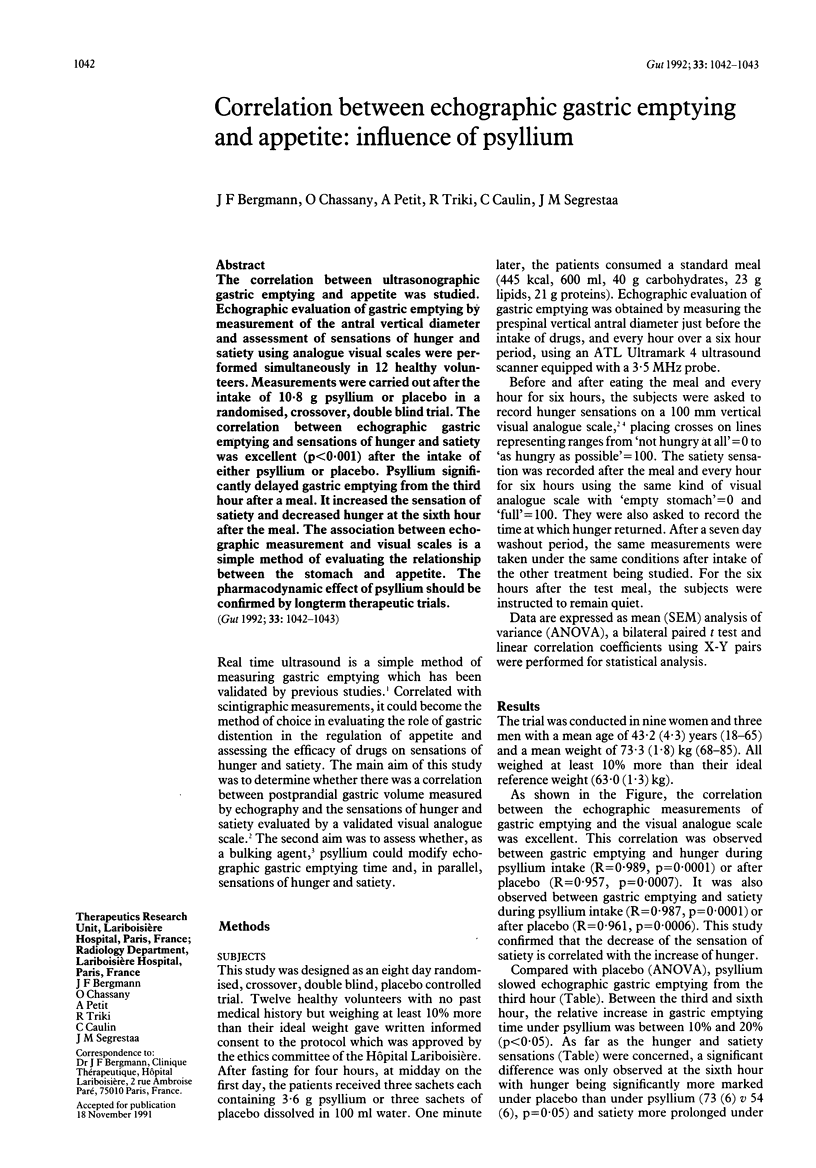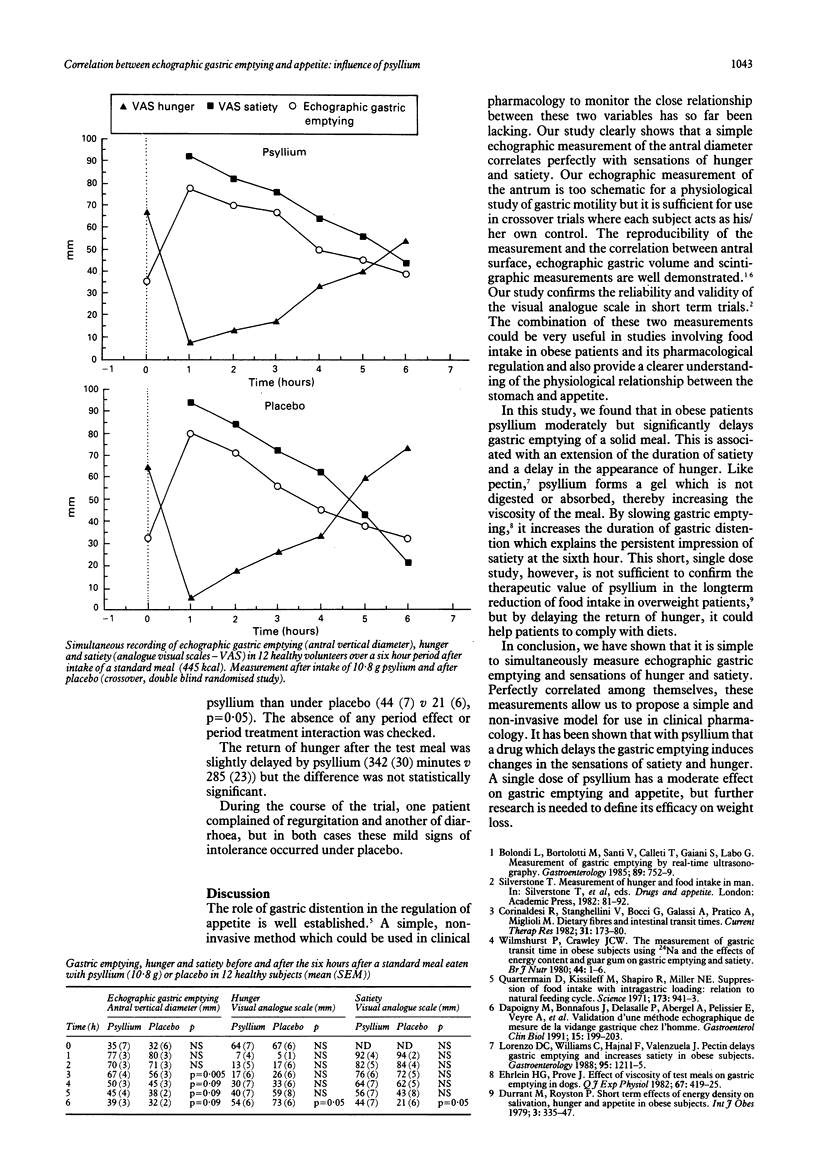Abstract
The correlation between ultrasonographic gastric emptying and appetite was studied. Echographic evaluation of gastric emptying by measurement of the antral vertical diameter and assessment of sensations of hunger and satiety using analogue visual scales were performed simultaneously in 12 healthy volunteers. Measurements were carried out after the intake of 10.8 g psyllium or placebo in a randomised, crossover, double blind trial. The correlation between echographic gastric emptying and sensations of hunger and satiety was excellent (p < 0.001) after the intake of either psyllium or placebo. Psyllium significantly delayed gastric emptying from the third hour after a meal. It increased the sensation of satiety and decreased hunger at the sixth hour after the meal. The association between echographic measurement and visual scales is a simple method of evaluating the relationship between the stomach and appetite. The pharmacodynamic effect of psyllium should be confirmed by longterm therapeutic trials.
Full text
PDF

Selected References
These references are in PubMed. This may not be the complete list of references from this article.
- Bolondi L., Bortolotti M., Santi V., Calletti T., Gaiani S., Labò G. Measurement of gastric emptying time by real-time ultrasonography. Gastroenterology. 1985 Oct;89(4):752–759. doi: 10.1016/0016-5085(85)90569-4. [DOI] [PubMed] [Google Scholar]
- Dapoigny M., Bonnafous J., Delasalle P., Abergel A., Pélissier E., Veyre A., Bommelaer G. Validation d'une méthode échographique de mesure de la vidange gastrique chez l'homme. Gastroenterol Clin Biol. 1991;15(3):199–203. [PubMed] [Google Scholar]
- Di Lorenzo C., Williams C. M., Hajnal F., Valenzuela J. E. Pectin delays gastric emptying and increases satiety in obese subjects. Gastroenterology. 1988 Nov;95(5):1211–1215. doi: 10.1016/0016-5085(88)90352-6. [DOI] [PubMed] [Google Scholar]
- Durrant M., Royston P. Short-term effects of energy density on salivation, hunger and appetite in obese subjects. Int J Obes. 1979;3(4):335–347. [PubMed] [Google Scholar]
- Ehrlein H. J., Pröve J. Effect of viscosity of test meals on gastric emptying in dogs. Q J Exp Physiol. 1982 Jul;67(3):419–425. doi: 10.1113/expphysiol.1982.sp002657. [DOI] [PubMed] [Google Scholar]
- Quartermain D., Kissileff H., Shapiro R., Miller N. E. Suppression of food intake with intragastric loading: relation to natural feeding cycle. Science. 1971 Sep 3;173(4000):941–943. doi: 10.1126/science.173.4000.941. [DOI] [PubMed] [Google Scholar]
- Wilmshurst P., Crawley J. C. The measurement of gastric transit time in obese subjects using 24Na and the effects of energy content and guar gum on gastric emptying and satiety. Br J Nutr. 1980 Jul;44(1):1–6. doi: 10.1079/bjn19800003. [DOI] [PubMed] [Google Scholar]


